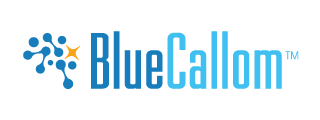Innovation, its flavors and why they exist
The different innovation flavors and terms are confusing and oftentimes are only used to distract from an inability to innovate. But what is the meaning and how can you focus on genuine innovation.
Groundbreaking vs. Disruptive innovation
Those two flavors of innovation are rather close. Yet, when looking under the hood, there is a slight difference.
1) Disruptive Innovation assumes creating a new market that will eventually disrupt existing players in related existing market segments. Indomie noodles for instance created an all-new market in Africa. The automobile is another example of disruptive innovation, creating an entire market that displaced coaches and other transportation. On the one hand, the opportunity to create a new market is becoming smaller and smaller. On the other hand, disrupting existing markets is exponentially growing as most technologies or products reached an age that it is time to completely rethink what is out there.
2) Groundbreaking Innovation does not necessarily create a new market but breaks new ground in an existing market as well as possibly create a new market. Groundbreaking Innovation is always disruptive whether it is in a new or existing market. Tesla is a great example as the car market existed but is newly defined by Tesla. Same with Space-X. It existed and was developed by NASA and others, but was newly defined through disruptive technologies by Space-X. Apple’s iPhone is another example. The phone market existed but Apple disrupted that market with groundbreaking innovation, the iPhone. Groundbreaking innovation is always disruptive. Groundbreaking innovation is simply not limiting innovation to a specific case but genuine innovation in general. The personal computer did not disrupt the computer industry, even though it thought it would. Instead, it created an all-new computer market. Groundbreaking innovation addresses innovation needs to disrupt a market or create new markets. A nap cafe for a 20 min sleep for instance would not disrupt anything but create an additional and new groundbreaking business segment.
Groundbreaking innovation is not limited to new or existing markets. Radical innovation is similar to groundbreaking innovation but is focused on addressing existing markets.
Fake Innovation Flavors & their Risk
There are floating many more flavors of innovation such as gradual innovation, architectural innovation, and improvement innovation. Breakthrough innovation is described as an innovation from within a company that pushes something to the next level and can be considered similar to gradual innovation. These flavors of innovation are a big risk to innovation because all it is just an improvement. Gradual innovation, improvement innovation, or architectural innovation do not produce genuine innovation. Moreover, they bear a high innovation risk because they make those who are trying to innovate believe that the result is a type of innovation. However, if a competitor develops a genuine innovation, stays under the radar for a while, and disrupts that market segment, the fake innovation will implode immediately and the disrupter enters the market without any problem.
Most consumers cannot differentiate between innovation types and they do not care – there is no reason to even look at it. They chose the best product for them. With large business customers, it’s a bit different but still like consumers they are not impressed. The financial market however looks more closely than ever before at what the innovation effort is, as they calculate valuation based on the long-term effects of innovation. Fake innovation is not only immediately uncovered, it leads to extra distancing from the brand because the company either does not understand what innovation is or purposely faking innovation. Both have very negative connotations.
Recommendations
- Stay away from using gradual, architectural, improvement, or other fake innovation types. It does not help in any way and is not really innovation.
- Ask yourself what would be a possible disruption to your business and how can you pre-empt a possible disruptive attack? The answer is simple: Be the one who moves first and don’t allow a position of following others.
- Learn more about ideation, deep innovation design, the innovation duality of brilliant ideation, and relentless execution.
- Develop an innovation strategy that addresses the terminology, how to achieve innovation, c-level empowerment, team composition, budgets, and more.
- Reach out to the BlueCallom team and ask for free advice or even better participate in a free Innovation Readiness Assessment.

Leave a Reply
Want to join the discussion?Feel free to contribute!